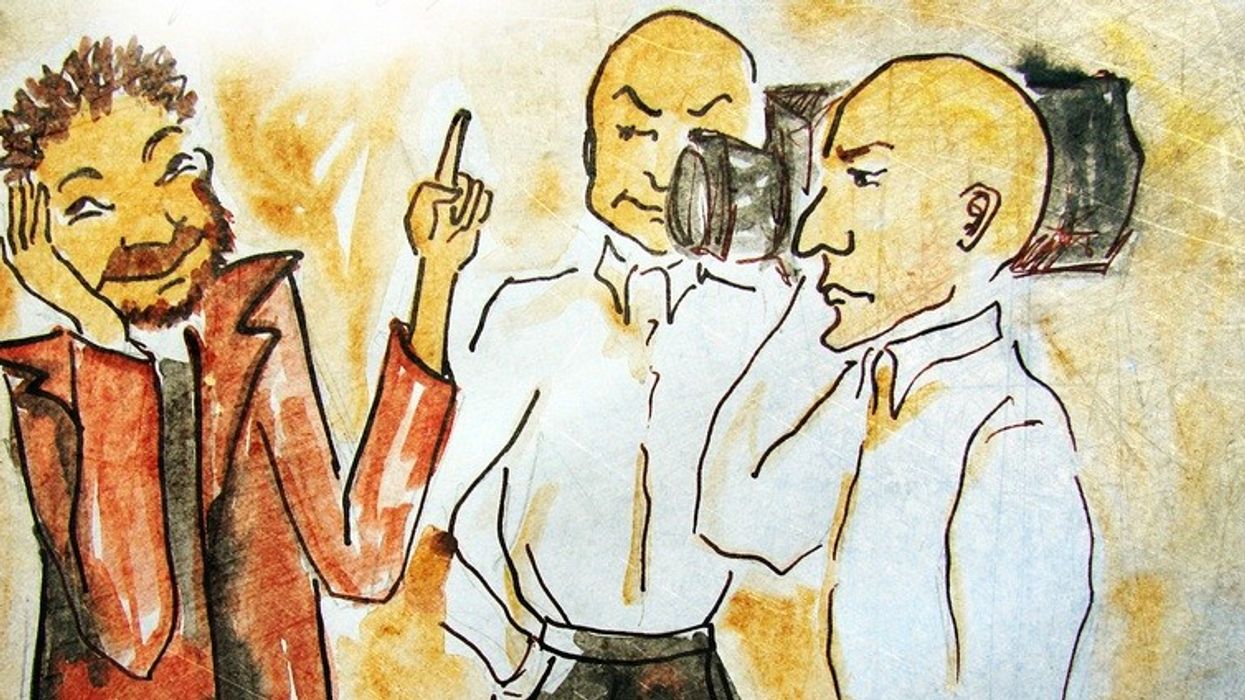This is a guest post by DP and filmmaker Randolph Sellars.
One of the fundamental tools for an actor is their "objective." This is a specific way of working with character "motivation." Discovering a character’s objective begins with asking the question "what does this character really want or need during a particular scene?" This is not to be confused with what the character says in the dialogue. We are looking for the "subtext" or unspoken desires of a character that can be channeled into specific behavior.
For instance, a scene could involve a boy and girl discussing geometry homework. But based on subtle hints written into the dialogue, as well as the screenwriter’s stage directions, the director determines that the scene is really about a couple falling in love. To direct and act this scene effectively, each character should have a specific behavioral objective. What the actor does to achieve their objective is often referred to as their "intention."
What the actor is "doing" will naturally impact how they say their dialogue. This is a much more organic approach to getting a natural performance than micro-managing line readings. I highly suggest discussing objectives with each actor privately so that they are not aware of the other actor’s objective. This will keep the emotional beats of a scene fresh and less predictable. After all, in real life we don’t always know what the other person is thinking or what they are up to. Using the couple falling in love scene as an example, a dialogue with the actors might sound like this:
Director (to actress): "What does Sarah really want in this scene?" Sarah: "She loves Charles and wants him to love her back." Director: "OK, let’s find a specific action that you can play. If he doesn’t say so directly in the dialogue, how would you know for sure that he loves you? What would he have to do?" Sarah: "I’d know for sure if he kissed me!" Director: "Great! That’s your objective. Don’t worry if you don’t get the dialogue perfect. You know it just fine. I know it’s not in the script, but I want you to try as hard as you can to make him kiss you!"
Because all good scenes have some element of emotional charge, our director decides to encourage a "conflicting objective" for the actor:
Director: "Charles, what do you want in this scene?" Charles: "Help with my homework. But I also think I like Sarah – so I’m trying to be nice, be interested." Director: "That’s fine that you’re nice to her. After all, she is helping you with your homework. But why is the homework important to you?" Charles: "I don’t know – maybe I suck at geometry." Director: "That’s fine, but let’s raise the stakes. What if you are failing geometry and need to pass an upcoming test?" Charles: "Yeah, and if I don’t pass this test I can’t play football!" Director: "You got it! Remember, no matter what Sarah does, you’ve got to keep her on task to pass this test!"
Can you imagine how this scene might play out now? If the actors really commit to their conflicting objectives, emotional sparks should fly. The actors are instructed to perform the dialogue "as written," so they must use other strategies to achieve their objective. Charles has no idea that he is about to be seduced. When Sarah advances, he must react quickly and use his body language and vocal tone only to ward her off and keep the conversation on geometry. Sarah might "cooperate" by illustrating her dialogue with an appropriate but suggestive drawing. If Sarah plays her objective fully, it will likely inform her dialogue with a whole new meaning. A line like "the greater angle must intersect the opposing circle" becomes infused with comedic sexual tension. It doesn’t matter if she doesn’t actually achieve her goal of "a kiss from Charles" as long as she really tries. If the director doesn’t want a kiss to happen in this scene, it’s important that Charles totally commits to his objective to prevent it.
Notice how the director worked with Charles to create an imaginative "back-story" about failing the test in order to strengthen his objective. It doesn’t matter if this back-story really happened in the script or not - as long as the performance appears truthful. Of course, a director can and should experiment in rehearsal with different objectives and intentions to discover the emotional subtext of a scene. The results can be unpredictable – but also magical! Using objectives as a directing technique is just the tip of the iceberg. Other techniques, such as using "action verbs," can be used to further hone objectives and intentions.
If you want to learn more directing techniques, I highly suggest reading Judith Weston’s amazing book Directing Actors. Several filmmakers who commented on my last two posts also recommended this book. There are many excellent books about acting, but this is one of the few (in my opinion, best) books written about the process of directing actors. Weston has many successful and famous directors as former students who attest to the viability of her philosophy and techniques. It takes an open mind and lots of patience to change your current habits and try new approaches like these. But if you really commit to practicing the techniques found in this book, I can almost guarantee that your skill at directing actors will increase exponentially! After you master the first book, Weston has also written a more advanced book, The Film Director’s Intuition.
Happy Directing!













